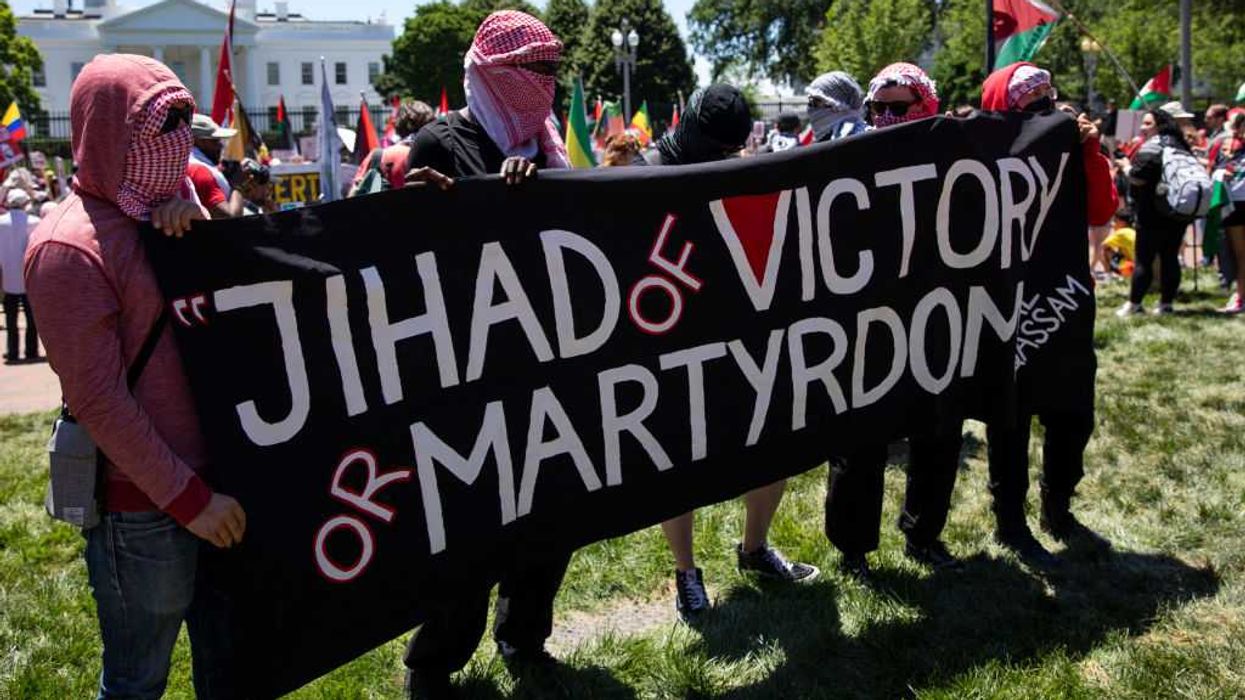Every American living in the U.S. today has lived in a dollar-dominated world. After World War I, the dollar replaced the British pound as the world's strongest currency after the war decimated and depleted Europe's economies. The Bretton Wood Agreement in 1944 solidified the dollar's standing as the international trade currency. In 1973, the "petro-dollar" was born, with all oil purchases transacted through the U.S. dollar.
The U.S. dollar's dominance has funded our way of life without collapsing on our own debt and secured our place as the world's leading superpower.
Until now.
The dollar is under the greatest attack since it rose to its place of prominence after World War I. Led by China and Russia, the BRICS alliance, composed of Brazil, Russia, India, China, and South Africa, aims to create a "multi-polar" world where the yuan and ruble provide an alternative currency for those who want to become independent from the dollar and the influence it entails.
The dollar is under the greatest attack since it rose to its place of prominence after World War I.
In 2023, we have seen the biggest international rally against the U.S. dollar since World War I. Trading relationships that the U.S. has long taken for granted are now turning to the Chinese yuan to bypass the Western "strings attached" to the dollar. This means countries like Iran and Russia now have a way to bypass U.S. sanctions. The greater threat is a new "world order" controlled by China and Russia depleting the U.S. dollar. This has the potential to completely alter our way of life.
Below are the top 9 countries to take active steps against the U.S. dollar, posing the greatest threat to the U.S. as a superpower.
1. Argentina

Argentina's President Alberto Fernandez (right) welcomes Brazil's President Lula da Silva (left) to Buenos Aires.
Bloomberg / Contributor | Getty Images
Argentina and Brazil announced they will be forming their own common currency with the explicit purpose of severing their reliance on the U.S. dollar. Brazil and Argentina are the first and second-largest economies in Latin America. The move will help them become more immune to U.S. sanctions as they progress towards closer ties with China. Moreover, Argentina is considering joining the BRICS alliance as a formal step away from the U.S. dollar.
2. Brazil

President Lula da Silva (left) shakes hands with China's Ambassador to Brazil Zhu Qingqiao (right).
SERGIO LIMA / Contributor | Getty Images
One of the founding members of the BRICS alliance, Brazil signed a memorandum of understanding with China earlier this year to establish a yuan-clearing arrangement, the first step in establishing bilateral trade with China. More progress to this end is expected this week as Brazilian President Lula de Silva prepares to visit President Xi in Beijing.
Lula de Silva ousted former President Bolsonaro, who was more closely aligned with the U.S. and Western interests. Now, Silva aims to lessen Brazil's dependence on the U.S. dollar and the risk of sanctions for doing business with enemy nations with the U.S.
Henry Osvald, president of the Brazilian Association for Industry, Commerce and Innovation in China (BraCham) remarked that the deepening ties between Brazil and China "comes at a very important moment as the US dollar is not stable and it is depreciating considerably." Moreover, Osvald said:
Brazil is the only country in Latin America that has a bank established in China, and there are already several Chinese banks established in Brazil - this will help economic and trade ties and strengthen the yuan as an alternative to the US dollar and the euro.
As Iran, China, and Russia are continually aiming to expand their interests in Latin America, the Chinese yuan will allow them to do so with less fear of repercussions from the U.S.
3. China

China's President Xi Jinping leads the anti-dollar coalition through boosting the yuan's international status.
LUDOVIC MARIN / Contributor | Getty Images
The Chinese yuan is the biggest challenger to the U.S. dollar as the international trade currency of choice. From their Belt and Road Initiatives to forging closer ties with countries that were subject to U.S. sanctions, China is positioning the Yuan as an alternative to countries who aim to become more independent from the U.S. dollar and the influence it entails.
China is the focal point of all the countries on this list. Xi is providing a way for nations who want to distance themselves from U.S. interests to do so without fear of economic repercussions. The list is already large and will continue to grow as China seeks to expand BRICS and the yuan's influence in Latin America and Africa.
4. France

French President Macron (left) greets President Xi (right) during his historic visit to Beijing.
LUDOVIC MARIN / Contributor | Getty Images
France, a long-time U.S. ally, has become one of the most outspoken Western critics of the U.S. dollar and the European spokesperson for autonomy from the U.S. In his recent historic visit to Beijing, Macron reiterated his call for Europe's "strategic autonomy" to prevent becoming "vassals" to the U.S. Macron, like German Chancellor Olaf Scholz, are determined to keep industrial ties with China despite the growing conflict between China and the U.S.
France's determination to distance itself from the U.S. is a major blow to U.S. foreign policy and relations with the West. It speaks volumes to the deterioration of trust behind U.S. fiscal and foreign policy in regards to the U.S.'s closest allies.
5. India

India's Prime Minister Modi (right) and Putin (left) deepen trade relations with the rupee and rouble to bypass U.S. pressures attached to the dollar.
Bloomberg / Contributor | Getty Images
Behind the Chinese yuan, the Indian rupee is arguably the second-greatest challenger to the U.S. dollar. As a BRICS founding member, India has long aimed to distance itself from the influence of the dollar. This year, India took a major step forward, announcing its new trade policy that steps away from the dollar in favor of placing the rupee and Russian ruble as international currencies to settle trade transactions.
In addition to strengthening the rupee's standing for trade transactions across Asia, most notably Malaysia, India agreed to use both rupees and rubles instead of the dollar in mutual trade with Russia to avoid Western sanctions. India also agreed to switch to a rupee payment for Iranian crude imports, bypassing Western sanctions on Iranian oil.
6. Iran

Iranian President Ebrahim Raisi (left) meets with Chairman of the Standing Committee of the National People's Congress of China Li Zhanshu (right) during his official visit to Beijing, China on February 14, 2023.
Anadolu Agency / Contributor | Getty Images
There are few countries who are subject to more international sanctions from the U.S. than Iran. Sanctions on Iran's oil and weapons industries have been a long-time strategy used by the U.S. to restrict Iran's nuclear program. However, with the Chinese Yuan as an option, U.S. sanctions will lose much of their power in curbing Iran's initiatives. Through using the yuan, Iran can trade its oil, sell its weapons to Iranian-backed militias wreaking havoc throughout the Middle East, and continue to grow its nuclear program with less fear of international consequences.
7. Russia

Putin (right) and Xi (left) lead the BRICS alliance against the U.S. dollar and influence.
Contributor / Contributor
China and Russia have been forging closer ties for years to deal with Western opposition. However, the war in Ukraine has brought them closer than ever before. Putin and Xi's historic meeting in Beijing solidified their military and economic alliance, aiding each other in bypassing Western sanctions and pressures.
Putin called for the Chinese yuan to be used globally, saying, “We support using Chinese yuan in transactions between the Russian Federation and its partners in Asia, Africa and Latin America." Moreover, Xi told Putin, “Right now, we’re seeing a change we haven’t seen in 100 years, and we’re driving this change together" signaling a new "multi-polar" world order with China and Russia becoming legitimate power challengers to the U.S.
Last month alone, the yuan overtook the dollar as the most traded currency on the Moscow Exchange for the first time ever, representing almost 40 percent of total trading volume. As they aim to make the yuan the international currency of choice beyond Russia into the developing world, Russia and China pose the greatest economic threat to the U.S., as Xi said, in the past "100 years."
8. Saudi Arabia

Saudi Arabia Deputy Crown Prince Mohammed bin Salman (left) greets Chinese President Xi Jinping (right)
Pool / Pool | Getty Images
Saudi Arabia's decision to ditch the "petro-dollar" in favor of the "petro-yuan" is arguably the most significant blow to the U.S. economy in modern times. The "petro-dollar" refers to the dollar's standing as the currency facilitating oil that has been traded and sold from Saudi Arabia. The “petro-dollar” has been an integral part of the U.S.’s foreign policy and economic standing since the 1970s.
It is one of the main reasons why politicians justify taking on so much domestic debt—most countries "buy up our debt" via oil purchases. Our current way of life is completely dependent upon foreign investors, who hold a total of $7.3 trillion in U.S. debt as of 2022. We've been free print ourselves into oblivion knowing our foreign investors will pick up the bill.
Not anymore.
Now, Saudi calls for all oil transactions to be carried out in yuan, NOT the U.S. dollar. This isn't merely a major blow to the dollar's international reputation as a safely-backed currency—it is a threat to our way of life and our fiscal bottom line.
9. South Africa

South African President Ramaphosa (left) greets fellow BRICS member, Vladimir Putin (right).
Mikhail Svetlov / Contributor | Getty Images
South Africa is arguably one of the most outspoken opponents to the U.S. dollar out of the BRICS nations. South African President Cyril Ramaphosa says he'll use his chairmanship of the BRICS group of leading emerging economies to focus on advancing African interests, creating less dependency on the dollar and Western influence. He said:
Our continent was pillaged and ravaged and exploited by other continents and we therefore want to build the solidarity in BRICS to advance the interests, of course initially of our own country, but also of the continent as a whole.
China is already Africa's largest trading partner. With Ramaphosa's urgency to expand BRICS on the continent, it is clear that Western interests are losing the battle on the African front.

 AASHISH KIPHAYET / Contributor | Getty Images
AASHISH KIPHAYET / Contributor | Getty Images
 Harold M. Lambert / Contributor | Getty Images
Harold M. Lambert / Contributor | Getty Images Adam Gray / Stringer | Getty Images
Adam Gray / Stringer | Getty Images Anadolu / Contributor | Getty Images
Anadolu / Contributor | Getty Images